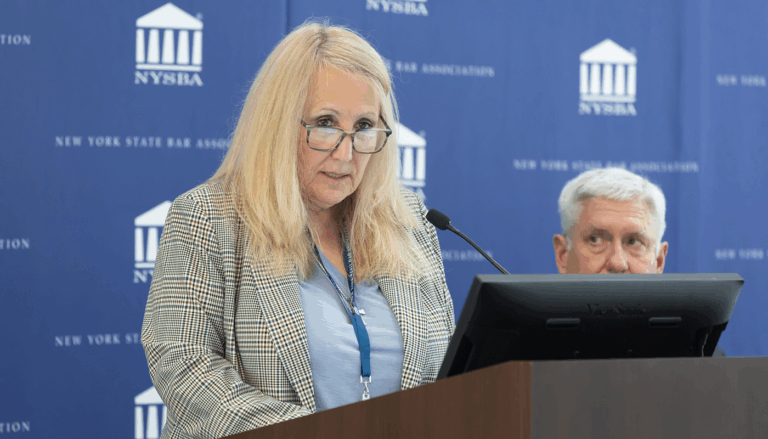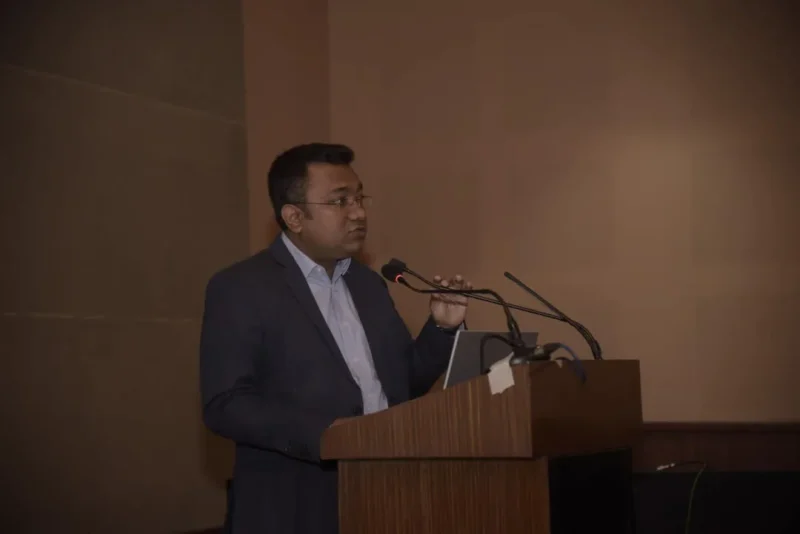New York State Bar Association To Develop Plans To Combat Age Discrimination in the Legal Profession – New York State Bar Association

Report on the New York State Bar Association’s Initiative to Combat Age Discrimination in Alignment with Sustainable Development Goals
On October 27, 2025, the New York State Bar Association (NYSBA) adopted a report from its Task Force on Ageism in the Legal Profession. This initiative represents a significant commitment to advancing several United Nations Sustainable Development Goals (SDGs) by addressing systemic age-based discrimination. The recommendations aim to foster inclusive economic growth, reduce inequality, and strengthen institutional justice, directly contributing to the 2030 Agenda for Sustainable Development.
Core Mandate and Alignment with SDG 10: Reduced Inequalities
The primary objective of the task force is to eliminate age-based discrimination within the legal field, a goal that directly supports SDG 10 (Reduced Inequalities). The recommendations are designed to ensure equal opportunity and promote the social and economic inclusion of all legal professionals, irrespective of age, as called for in SDG Target 10.2.
Key Recommendations for Promoting Decent Work (SDG 8) and Quality Education (SDG 4)
The report outlines several actionable strategies to create a more equitable work environment. These measures align with SDG 8 (Decent Work and Economic Growth) by promoting full and productive employment for all, and with SDG 4 (Quality Education) by emphasizing lifelong learning and relevant skills development.
- Enhancing Employability and Skills: In line with SDG Target 4.4, the report recommends training older workers in new technologies, ensuring they possess relevant skills for continued, decent employment.
- Ensuring Fair Hiring Practices: To advance SDG Target 8.5 (full and productive employment and decent work for all), the task force calls for removing age-related bias from job applications and eliminating discriminatory logic from artificial intelligence software used in employment decisions.
- Mandatory Training and Education: The report advocates for requiring age discrimination training for employers and incorporating it into Continuing Legal Education (CLE) requirements, fostering an institutional culture of inclusivity and supporting SDG Target 16.6 (effective, accountable and transparent institutions).
Legislative and Institutional Strengthening for Sustainable Development (SDG 16)
A central component of the initiative involves advocating for systemic changes to legal and institutional frameworks, which is fundamental to achieving SDG 16 (Peace, Justice and Strong Institutions). The recommendations seek to promote and enforce non-discriminatory laws and policies as outlined in SDG Target 16.b.
- Legislative Reform: The task force proposes expanding the definition of age discrimination within the federal Age Discrimination in Employment Act to provide stronger legal protections.
- Increased Accountability: A call to increase penalties for employers who engage in discriminatory practices aims to strengthen enforcement and protect labor rights, contributing to SDG Target 8.8.
- Data-Driven Policy: To ensure transparent and evidence-based action, the report recommends including age-related data in surveys of the legal profession. This will help determine the full extent of age discrimination and measure progress toward SDG 10.
Broader Economic and Social Implications
The report also recognizes the wider economic benefits of an age-inclusive workforce. A key recommendation is to study the positive economic impact of increased labor participation among older workers on the financial health of Social Security. This forward-looking analysis connects the fight against ageism to the long-term sustainability of social protection systems, which is crucial for achieving SDG 1 (No Poverty) and SDG 8 (Decent Work and Economic Growth).
Analysis of SDGs in the Article
1. Which SDGs are addressed or connected to the issues highlighted in the article?
-
SDG 8: Decent Work and Economic Growth
- The article focuses on employment issues within the legal profession, specifically addressing barriers faced by older workers. Recommendations such as training older workers in new technologies and studying the economic benefits of their increased labor participation directly relate to promoting productive employment and decent work for all age groups.
-
SDG 10: Reduced Inequalities
- The central theme of the article is combating age discrimination. This directly aligns with SDG 10, which aims to reduce inequality within and among countries by empowering and promoting the social and economic inclusion of all, irrespective of age. The recommendations to remove age-related bias from job applications and increase penalties for discrimination are clear efforts to reduce inequality of opportunity.
-
SDG 16: Peace, Justice and Strong Institutions
- The article details the actions of the New York State Bar Association, a key legal institution, to address a systemic injustice. By proposing changes to laws (the federal Age Discrimination in Employment Act) and promoting non-discriminatory practices, the association is working to build more effective, accountable, and inclusive institutions and enforce non-discriminatory laws, which is the core of SDG 16.
2. What specific targets under those SDGs can be identified based on the article’s content?
-
Under SDG 8: Decent Work and Economic Growth
- Target 8.5: “By 2030, achieve full and productive employment and decent work for all women and men, including for young people and persons with disabilities, and equal pay for work of equal value.” The article’s focus on older workers through recommendations like “training older workers in new technologies” and studying the “economic benefits of increased labor participation” directly supports the goal of achieving full and productive employment for all age groups.
-
Under SDG 10: Reduced Inequalities
- Target 10.2: “By 2030, empower and promote the social, economic and political inclusion of all, irrespective of age…” The entire initiative described in the article is aimed at promoting the economic inclusion of older lawyers by tackling ageism, which is a direct contribution to this target.
- Target 10.3: “Ensure equal opportunity and reduce inequalities of outcome, including by eliminating discriminatory laws, policies and practices…” The recommendations to “expand the definition of age discrimination in the federal Age Discrimination in Employment Act,” “increase penalties for employers who discriminate,” and remove “age-related bias from job applications” are concrete actions to eliminate discriminatory policies and practices.
-
Under SDG 16: Peace, Justice and Strong Institutions
- Target 16.b: “Promote and enforce non-discriminatory laws and policies for sustainable development.” The task force’s recommendation to expand the federal Age Discrimination in Employment Act and require employers to undergo age discrimination training is a direct effort to promote and enforce non-discriminatory laws and policies.
3. Are there any indicators mentioned or implied in the article that can be used to measure progress towards the identified targets?
-
Explicit Indicator:
- The article explicitly mentions a recommendation for “Including age-related data in surveys of the legal profession to determine the extent of age discrimination.” This data would serve as a direct indicator to measure the prevalence of discrimination and track progress over time, aligning with the measurement needs for SDG 10 and SDG 16 (specifically indicator 16.b.1, which tracks the proportion of the population reporting discrimination).
-
Implied Indicators:
- Labor force participation rate of older persons: The recommendation to study the “economic benefits of increased labor participation” implies that the participation rate of older lawyers is a key metric. An increase in this rate would indicate progress towards Target 8.5.
- Number of age discrimination complaints/cases: While not explicitly stated, an increase in penalties and expanded legal definitions would likely be tracked by the number of cases filed and their outcomes. This could serve as an indicator of the effectiveness of the new measures under Target 10.3.
- Adoption of non-discriminatory policies: The number of law firms or employers that adopt policies to remove age bias from AI software or implement mandatory age discrimination training could be tracked as a measure of progress towards Target 16.b.
4. Table of SDGs, Targets, and Indicators
| SDGs | Targets | Indicators (Identified in the Article) |
|---|---|---|
| SDG 8: Decent Work and Economic Growth | Target 8.5: Achieve full and productive employment and decent work for all, including older persons. |
|
| SDG 10: Reduced Inequalities |
Target 10.2: Empower and promote the social and economic inclusion of all, irrespective of age.
Target 10.3: Ensure equal opportunity and eliminate discriminatory laws, policies, and practices. |
|
| SDG 16: Peace, Justice and Strong Institutions | Target 16.b: Promote and enforce non-discriminatory laws and policies for sustainable development. |
|
Source: nysba.org
What is Your Reaction?
 Like
0
Like
0
 Dislike
0
Dislike
0
 Love
0
Love
0
 Funny
0
Funny
0
 Angry
0
Angry
0
 Sad
0
Sad
0
 Wow
0
Wow
0
















































:focal(1500,1000)/https://media.globalcitizen.org/a6/9a/a69a4720-d8a1-4715-b596-18738d03c05c/rotary_polio_hero_image.jpg?#)







/countries/sri-lanka/photo-credit---dmc-sri-lanka.tmb-1200v.jpg?sfvrsn=dc298bcc_1#)

















